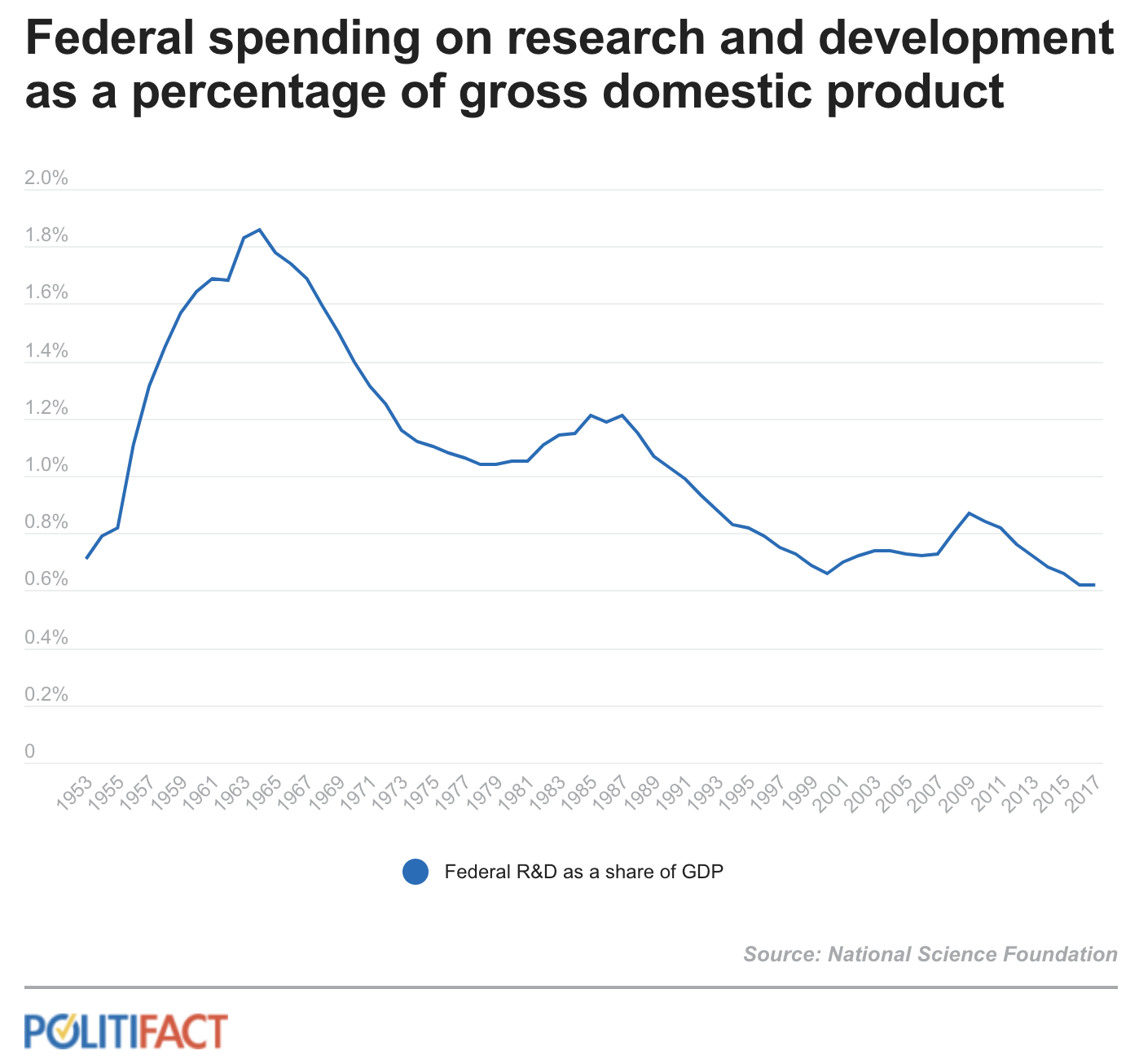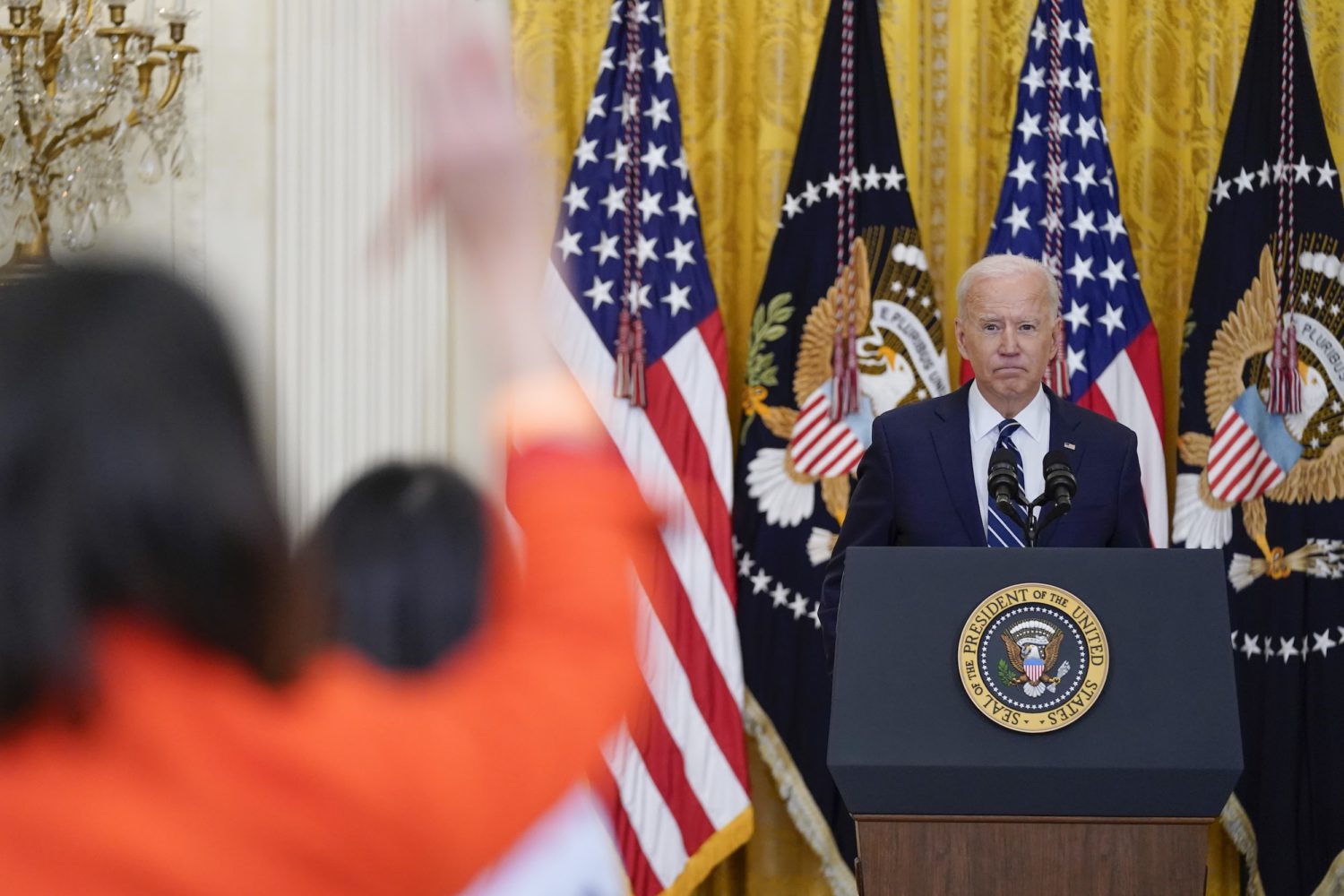President Joe Biden blamed Donald Trump for the surge of migrants at the southwest border, saying his predecessor dismantled the country’s immigration system and failed to provide enough beds for child migrants.
At the first press conference of his presidency, Biden downplayed the number of migrants crossing the border, saying past years had seen similar seasonal increases. Biden said that his administration will speed up efforts to get children united with relatives in the country.
“We can get this done,” Biden said. “We’re going to get it done.”
Biden started the hour-long session by announcing he planned to double his vaccination goal from 100 million to 200 million shots in arms in his first 100 days. He also talked about proposals to limit voting access in many states, calling them “un-American” and “sick.”
Some of his comments about migrant families and voting proposals needed a fact-check. Other claims proved accurate when we looked into them.
“We’re sending back the vast majority of the families that are coming.”
We rated his claim False. While most adults coming alone are being expelled under a public health law, the same is not true for families, according to federal data.
In February, the latest month for which data is available, Border Patrol expelled about 41% of families (which can include a child and at least one parent) who arrived at the southwest border. Authorities turned away more than half of families in January, about 64%. Most of that month fell during the Trump administration.
[the_ad id=”667826″]
There was a “28% increase in children to the border in my administration” and “31% … in 2019.” The increase in migration in January, February and March “happens every year.”
We rated this Mostly False. The number of children arriving at the border grew 63% from January to February 2021, more than double the rate Biden cited. The increase was about 33% in 2019, roughly in line with his claim.
Migration usually increases month-to-month from January to March. But Biden’s claim omits that his administration projects that Border Patrol encounters at the southern border will be the highest in 20 years.
Some states are deciding “that you cannot bring water to people standing in line waiting to vote, deciding that they are going to end voting at 5 p.m.”
Biden did not single out any states, but at least one — Georgia — is on track to ban giving food or water to in-line voters. He did not give the full picture for his claim about a 5 p.m. cutoff that would affect “working people.”
The Georgia House passed a bill, HB 531, on March 1 that prohibits “any money or gifts, including, but not limited to, food and drink, to an elector.” Such giveaways will be banned within 150 feet of a building where people are voting, within any polling place or within 25 feet of any voter standing in line. A violation is considered a misdemeanor.
A Georgia Senate bill has similar language, except it allows “self-service water from an unattended receptacle.”
Several proposed bills in multiple states would scale back early voting hours. We did not find one that bumped up the cutoff on Election Day. The White House pointed to the Georgia proposal, which sets weekday early voting hours as ending at 5 p.m. although it also allowed counties to extend hours to 7 p.m.
A Michigan bill bans the use of absentee ballot drop boxes after 5 p.m. the day before election day, which is 27 hours earlier than current law.
In Texas, a proposal would limit poll hours during the first week of early voting from 8 a.m. to 5 p.m. and from 7 a.m. to 7 p.m. during the second week, according to the Texas Tribune.
In Arkansas, Republicans introduced a bill that would end early voting at 4 p.m. the Saturday before the election, rather than the current 5 p.m. on the Monday before the election.
[the_ad id=”667872″]
Biden said “yes” when a reporter asked if he agreed with former President Barack Obama’s remark at Rep. John Lewis’ funeral that “the filibuster was a relic of the Jim Crow era.”
The emergence of the filibuster — the tool that allows a minority of senators to hold up a final vote on legislation — did not originate with legislation related to race, and it has been used against a wide variety of bills during the history of the Senate.
However, historians agree that for more than a century, the filibuster was closely linked with anti-civil-rights efforts in the Senate, thanks to repeated efforts by southern senators to filibuster civil rights bills.
Historians said the filibuster’s decades of use in opposition to civil rights bills has bequeathed it a historical stain. “The histories of the filibuster, civil and voting rights, and race in America are intertwined,” said Steven S. Smith, a political scientist and Senate specialist at Washington University in St. Louis.
“Since (the American Rescue Plan) was passed, a majority of economic forecasters have significantly increased their projections on the economic growth that’s going to take place this year. They’re now projecting that it will exceed 6%.”
Biden is right that several closely watched forecasters raised their projections to at least 6% growth, most of them specifically citing Biden’s $1.9 trillion coronavirus relief bill, which he signed on March 11.
On March 17, the Federal Reserve Board’s Open Market Committee said it expected GDP to increase by 6.5% this year, up from the 4.2% it had projected in December. The Fed’s statement partially credited “policy measures to support the economy.”
The same day, Fitch Ratings upped its growth forecast for 2021 from 4.5% to 6.2%, saying the “main driver” was “the much larger-than-expected fiscal stimulus package.” Other private ratings agencies also increased their projections, including the European bank HSBC Holdings, Deutsche Bank, and money manager Pimco.
[the_ad id=”667878″]
“Back in the ‘60s, we used to invest a little over 2% of our entire (gross domestic product) in pure research and investment in science. Today it’s 0.7%.”
This is accurate.
Biden cited this statistic in the context of U.S. economic competition with China, arguing that we need to invest more in basic and applied research.
Data from the National Science Foundation shows that federal spending as a percentage of gross domestic product hit a high of almost 1.9% in 1964 and has generally fallen since then, to 0.6% in 2017, the most recent year for which the foundation has complete data.

(PolitiFact)
This article was originally published by PolitiFact, which is part of the Poynter Institute. It is republished here with permission. See the sources for these fact checks here and more of their fact checks here.








